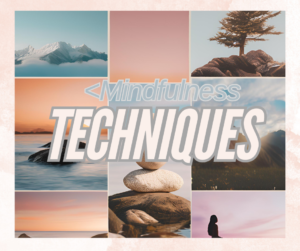The Power of Mindfulness: A Path to Inner Peace and Clarity
Impact-Site-Verification: 8bb90568-45c8-41d3-9a44-6c3a4a50d951 The Power of Mindfulness: A Path to Inner Peace and Clarity
In today’s fast-paced world, finding moments of calm can feel like an impossible task. Our minds are constantly racing, juggling responsibilities, and managing stress. But what if there was a simple practice that could help us reconnect with the present moment and experience peace amidst the chaos? That practice is mindfulness.
Mindfulness is the art of being fully present in the moment, without judgment or distraction. It is a powerful tool that can help reduce stress, enhance emotional well-being, and improve overall quality of life. Whether you are new to mindfulness or have been practicing for years, its benefits are profound and accessible to everyone.
What is Mindfulness?
At its core, mindfulness is the practice of paying attention to the present moment with openness, curiosity, and acceptance. It involves noticing your thoughts, feelings, and sensations without labeling them as “good” or “bad.” By doing this, we break free from the autopilot mode that often governs our lives and become more aware of our experiences as they unfold.
Mindfulness is rooted in ancient meditation traditions, but it has been embraced by modern psychology and wellness practices for its therapeutic benefits. Research has shown that regular mindfulness practice can improve mental clarity, emotional regulation, and even physical health. It can help reduce symptoms of anxiety, depression, and chronic pain, while fostering a deeper sense of gratitude and connection.
Why Practice Mindfulness?
- Reduces Stress and Anxiety
Mindfulness helps us step back from the constant swirl of thoughts and worries that often dominate our minds. By focusing on the present moment, we can create a sense of calm and reduce the mental chatter that fuels stress and anxiety. It is not about avoiding problems but rather learning to respond to them with a clear and balanced mind. - Enhances Emotional Well-Being
When we practice mindfulness, we become more in tune with our emotions. This awareness allows us to observe feelings without getting overwhelmed by them. Rather than reacting impulsively to emotions, mindfulness helps us choose how to respond in a way that aligns with our values and long-term well-being. Over time, this emotional intelligence can lead to greater resilience and a more peaceful inner state. - Improves Focus and Productivity
Mindfulness helps train the mind to focus on one task at a time. In a world full of distractions, this ability is invaluable. By practicing mindfulness, we can enhance our concentration and productivity, allowing us to work more efficiently and with greater satisfaction. This clarity of mind also helps us make better decisions and approach challenges with a sense of calm confidence. - Fosters a Greater Sense of Connection
Mindfulness encourages us to be present in our interactions with others. By giving our full attention to the people around us, we cultivate deeper and more meaningful relationships. Mindfulness also helps us develop empathy, compassion, and understanding, which are essential for building strong and supportive connections. - Promotes Physical Health
The benefits of mindfulness extend beyond the mind. Research has shown that mindfulness can have a positive impact on physical health by reducing inflammation, lowering blood pressure, and improving sleep quality. It can also support healthier lifestyle choices, such as eating mindfully, exercising regularly, and managing chronic pain.
How to Practice Mindfulness
Mindfulness is a skill that can be developed with consistent practice. Here are a few simple techniques to get started:
- Mindful Breathing
One of the easiest ways to practice mindfulness is through mindful breathing. Take a few moments to focus on your breath as you inhale and exhale. Notice the sensation of the air entering your body and leaving it. If your mind wanders, gently guide your attention back to the breath without judgment. - Body Scan Meditation
A body scan is a powerful technique that helps you become more aware of physical sensations. Start by focusing on your feet and gradually work your way up through your body, noticing any tension or discomfort. This practice can help you release stress and develop a deeper connection to your body. - Mindful Walking
Take a walk in nature or simply around your home, paying attention to each step and the sensations in your body. Focus on the feeling of your feet touching the ground and the rhythm of your movement. Walking mindfully allows you to be fully present in your surroundings and can be a great way to clear your mind. - Mindful Eating
Slow down and savor each bite of your food. Notice the textures, flavors, and smells. Eating mindfully can transform your relationship with food, helping you to appreciate nourishment and make healthier choices.
The Path to Mindful Living
Mindfulness is not just a practice—it is a way of living. By integrating mindfulness into our daily routines, we can begin to experience greater joy, peace, and clarity. It is not about being perfect or achieving a certain outcome; it is about embracing each moment with openness and compassion.
As you embark on your mindfulness journey, remember that it is a practice, not a destination. Be patient with yourself, and allow the practice to unfold naturally. With time, you may notice a shift in your perspective, a deeper sense of calm, and an increased ability to live fully in the present moment.
Embrace the power of mindfulness and let it guide you toward a life of peace, clarity, and connection.











https://shorturl.fm/eqcQL
https://shorturl.fm/h3xkw
https://shorturl.fm/u53dk